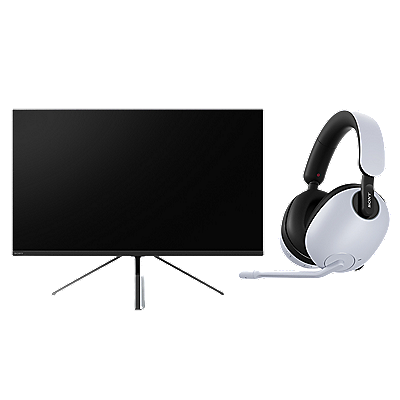Features

High-quality microphone capsules for clear voice recording
Despite its compactness and light weight, the ECM-S1 is equipped with three large-diameter (14 mm) microphone capsules that provide clear, high-quality sound recording with a flat frequency response, particularly in the low-mid-range voice band, while suppressing noise. Great sound quality makes a huge contribution to the overall impression made on viewers by well-produced video.

Wireless transmission with low latency and high sound quality
Bluetooth 5.3 (Bluetooth Low Energy) and a LC3plus codec provide low power consumption, low latency, and high sound quality. Improved wireless connectivity and performance even in environments with obstacles or multiple wireless sources deliver improved connection stability between the microphone and receiver. Communication is possible at up to 150 m when there is a good line of sight.

Low intrinsic noise levels deliver clear sound
The low intrinsic noise and wide dynamic range of the microphone allow clear capture of even low-level sound. Designed for streaming, the microphone is tuned particularly to capture the rich textures of the human voice near the mouth clearly and naturally.

Three selectable directivities
Three directivity options are available. Uni-directional is ideal for use in indoor environments, reducing the capture of sound reflected from walls; Omni-directional allows recording to include ambient and environmental sounds; and Stereo provides a sense of presence and high sound quality.

Noise-suppressing filter functions
A noise-cut filter uses digital signal processing to effectively remove annoying persistent background noise, for clear recording. A low-cut filter on the microphone side also reduces unwanted low-frequency sound from wind, air conditioning, and vibration. Less noise removal is needed post-production, making workflow more efficient.

Pop guard to suppress popping noise
A pop guard is included to prevent the annoying popping sounds that can occur due to vocal plosives when the microphone is placed close to the speaker's mouth, allowing vocals, narration, and other audio to be recorded under optimal conditions.

Power supply and built-in battery for long-duration shooting
The receiver is directly powered when connected either to the Multi Interface (MI) Shoe of a camera, or by USB Type-C® to a PC or other device. The microphone provides approximately 13 hours of built-in battery use, or can be continuously powered if connected by USB Type-C®.

Compact, lightweight body design
The ECM-S1 offers the high sound quality of a streaming microphone with compact and lightweight microphone and receiver units, ideal for either indoor (home studio) or outdoor use. The receiver measures 32 mm x 29 mm x 50 mm (W/H/D) and weighs 25 g. The microphone measures 63 mm x 137.5 mm x 63 mm (W/H/D) and weighs 157 g (including the stand).

Audio monitoring possible
When recording via a USB connection to a PC or smartphone, audio can be monitored before transmission to the external device by connecting commercially available headphones directly to the microphone.

Attachment to stand, tripod or boom arm
The microphone can be attached to a stand during recording, and the angle of the microphone can be adjusted back and forth. Alternatively, the 0.25 thread on the bottom of the microphone can be used to mount the microphone on a tripod, or a conversion adapter can be used to attach the microphone to a boom arm.

Operability enables real-time monitoring and adjustment
During sound collection, the microphone volume can be adjusted with the AUDIO LEVEL (upper) dial while checking the audio input level in real time with the LEDs. The headphone volume and the volume ratio between the microphone and the PC can be adjusted with the lower dial when a wired connection is used, and by pressing the dial, the mix of microphone input audio and device audio can be adjusted in steps. When the wireless connection is in use, the LINK lamps on the microphone and receiver can be used to check the connection status for recording.

Multi Interface (MI) Shoe for minimal audio delay and cable-less power supply
Connecting the receiver to a camera from Sony that supports the Multi Interface (MI) Shoe, such as one of the α™ series digital interchangeable-lens cameras or vlog cameras, eliminates the need for a separate cable to supply power or to provide the audio interface.

USB digital audio output
Both the microphone and receiver are equipped with a USB Type-C® port that provides 48 kHz/24-bit digital audio output. This allows the microphone to be connected either directly to a PC or smartphone via a USB cable; wirelessly to the receiver and then via a USB cable to a PC or smartphone; or to the camera via the MI Shoe.

Microphone audio input/output via 3.5-mm mini jack (stereo)
A 3.5-mm mini jack (stereo) is provided for audio output from the receiver, allowing use with cameras, PCs, IC recorders, and other devices not equipped with a Multi Interface (MI) Shoe.

Monaural, Uni-directional
Uni-directional directivity captures a wide range of sounds in front of the microphone while suppressing sounds from the rear. It is suitable for podcasting, narration, and other situations where the user is speaking alone.

Monaural, Omni-directional
Omni-directional directivity has equal sensitivity in all directions. It is suitable for recording multiple people's voices and capturing the ambient atmosphere of a place.

Stereo, Uni-directional
Stereo uni-directional directivity captures the left-right sound spread with a rich sense of presence and is suitable for musical performances and singing.



















